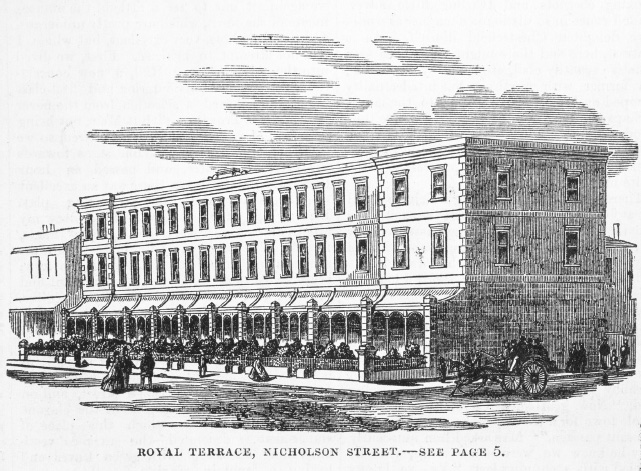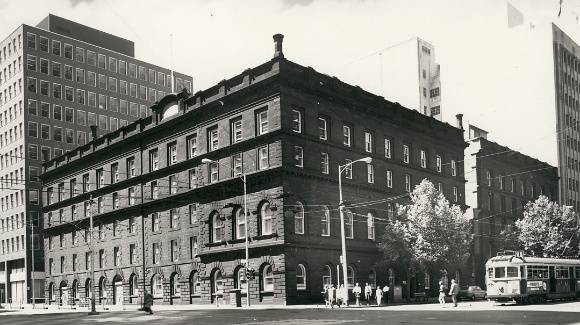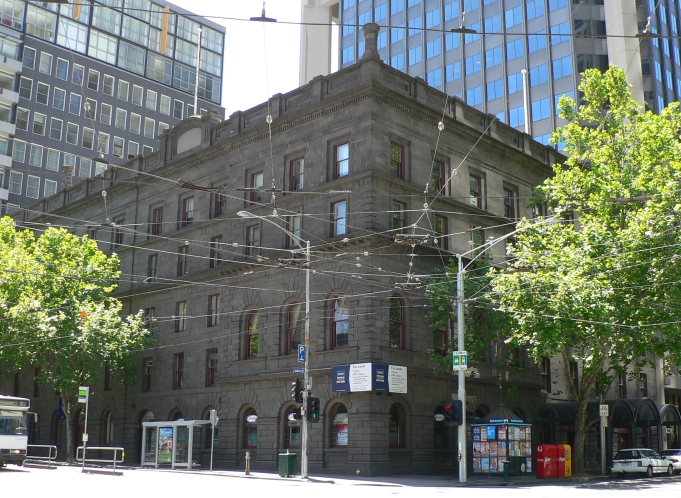When we demolished the back half of our house in 1999, Paul thought it would be a good idea to dig a wine cellar to go underneath the new extension. He started by pulling up the floor of the only ever half built bathroom. Weirdly, this bathroom stood as a self-contained square in the middle of the old extension: you could actually walk all the way around it.

He started digging a few months before the builders came to pull down the back of the house. We had no spare money so stayed in the house. Our builders moved our sink and stove into the loungeroom so we could cook. We had a hose to come through the window, and emptied the sink into a bucket. We had a portable shower and toilet in the back garden for months, and I used to bathe Joel in a big plastic toybox. Fun times!
But before all that, Paul started digging in the bathroom. At first it was just a small hole you could cover up at night; then eventually the bath had to come out. Digging down beneath layers of bricks he first came to layers of sticky black clay. It seemed unaccountably wet, too, till he realised there was a leak from one of the water pipes...And we sent small children down to do the work.



Then he hit the layer of huge bluestone boulders, jammed in together and stuck to each other with clay. They were too big to lift out, despite enormous crowbars, levers, and concrete breakers. So he hired a series of larger and larger jackhammers to break them up. At one point I looked down and saw him covered in black dust, holding up an enormous jackhammer, powered by a small generator/compressor, as it dug into a rock in front of his waist. Not your best OHS practice. And the house was soon full of black dust and sticky mud. It became a race to get it dug before the builders arrived. Soon they arrived to pull down the back of the house. They would work during the day; Paul would start in the afternoon, digging and digging, enlisting various friends to come and help.

I notice in this photograph below I am wearing a white linen frock; didn't seem to be getting down and dirty at all, myself.

Around the northern suburbs, lots of houses have small cellars for wine, cunningly concealed under floorboards, where you might keep a few boxes in the lovely coolth. But because this was being dug under a new construction, it was subject to all kinds of regulations about reinforcement. We originally had plans for something grandiose like two rooms you could stand up in.... But that was without accounting for the bluestone, that was so hard to dig out. It was physically exhausting, and dispiriting and very very slow, so it became smaller and smaller.


The piles of bluestone by the side of the house stayed there for several years...
And then the night before they were going to put in the scaffolding, Paul realised the layers of concrete and reinforcing were going to be so thick they would mean it would hardly be deep enough to stand up in, so in a super human effort he managed to clear another six inches of depth. It was almost heartbreaking to see how much of his labour went to make room for the frame and the two layers of steel mesh.

Anyway it is now a beautiful and secret place under the house. You can stand up in it, and we have transformed lots of rather ordinary wine into much better wines. And the good wines have become great. So, not a romantic bluestone-lined cellar to look at; but a place forever associated with the blood, sweat and tears of my cellar-loving, bluestone-breaking man.















































 http://vhd.heritage.vic.gov.au/search/nattrust_result_detail/64372
http://vhd.heritage.vic.gov.au/search/nattrust_result_detail/64372






